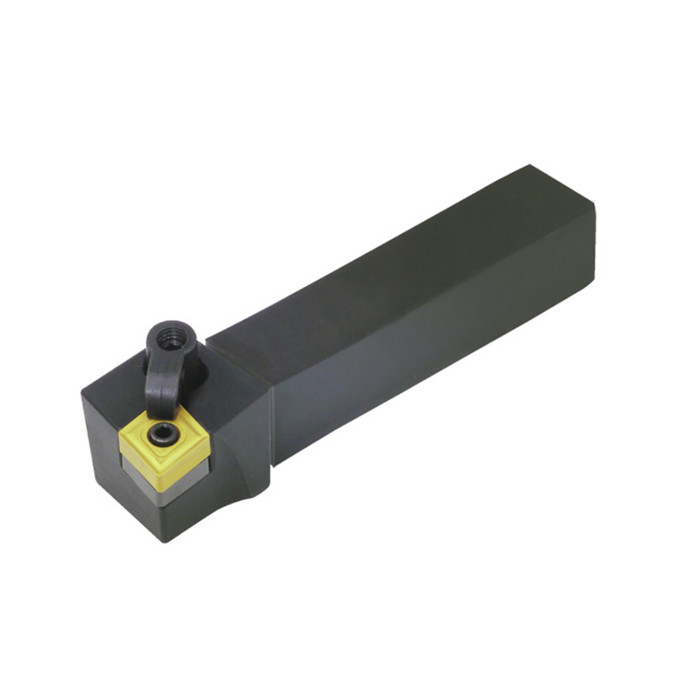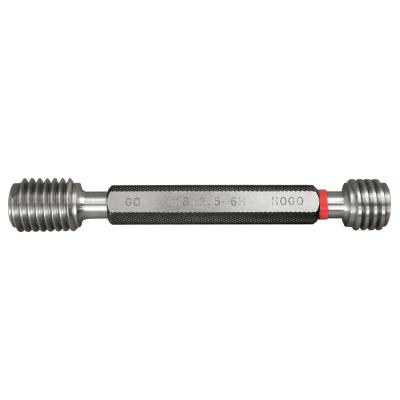High-Quality CNMG Turning Insert
CNMG Turning Inserts are widely used in metal cutting operations due to their versatility and efficiency. Choosing the right insert is crucial for achieving optimal performance, reducing costs, and ensuring high-quality results. This guide covers everything you need to know about selecting and using High-Quality CNMG Turning Inserts.
Understanding CNMG Turning Inserts
What is a CNMG Turning Insert?
A CNMG Turning Insert is a standardized, indexable cutting tool used in turning operations on lathes. The 'CNMG' designation refers to the insert's shape, clearance angle, tolerance, and the presence of a hole. The insert is typically made of carbide or other hard materials and is designed to be clamped into a tool holder.
Decoding the CNMG Designation
The CNMG designation provides important information about the insert's geometry:
- C: Insert Shape (80° Diamond)
- N: Clearance Angle (0°)
- M: Tolerance (±0.005')
- G: Insert with Hole
Understanding these designations helps you select the correct insert for your specific application.
Factors to Consider When Choosing CNMG Turning Inserts
Material to be Machined
The material you are machining is a primary consideration. Different materials require different insert grades and geometries. For example, machining steel requires a different insert than machining aluminum or stainless steel. Here at Wayleading Tools, we emphasize offering solutions tailored to your specific material needs.
Cutting Conditions
Cutting speed, feed rate, and depth of cut significantly impact insert performance. Higher speeds and feeds generate more heat, requiring inserts with better heat resistance. Consult cutting data charts or your machine tool manufacturer's recommendations for optimal cutting conditions.
Insert Grade
The insert grade refers to the material composition and coating of the insert. Common insert grades include carbide, cermet, ceramic, and coated carbides. Coated carbides are often preferred for their increased wear resistance and extended tool life. Different coatings are designed for specific materials and applications.
Insert Geometry
The insert geometry includes the nose radius, chipbreaker, and cutting edge angle. The nose radius affects surface finish and cutting forces. A smaller nose radius is suitable for finishing cuts, while a larger nose radius is better for roughing cuts. Chipbreakers help control chip formation and prevent chip entanglement.
Tool Holder Compatibility
Ensure that the CNMG Turning Insert you choose is compatible with your tool holder. Check the tool holder's specifications to determine the correct insert size and clamping mechanism.
Types of CNMG Turning Inserts and Their Applications
Roughing Inserts
Roughing inserts are designed for heavy material removal at high feed rates. They typically have a strong cutting edge and a chipbreaker to control chip formation. They are ideal for applications where surface finish is not a primary concern.
Finishing Inserts
Finishing inserts are designed for achieving a smooth surface finish. They typically have a smaller nose radius and a sharper cutting edge. They are ideal for applications where tight tolerances and a high-quality surface finish are required.
General-Purpose Inserts
General-purpose inserts are designed for a wide range of applications. They offer a balance of strength and sharpness and are suitable for both roughing and finishing operations.
Tips for Using CNMG Turning Inserts Effectively
Proper Clamping
Ensure that the CNMG Turning Insert is properly clamped in the tool holder. A loose insert can cause vibration, poor surface finish, and premature tool failure. Use the correct torque specifications for the clamping screw.
Coolant Application
Use coolant to dissipate heat and lubricate the cutting edge. Proper coolant application can extend tool life and improve surface finish. Flood coolant is generally preferred, but mist coolant can also be effective.
Avoid Overloading
Avoid overloading the insert by using excessive feed rates or depths of cut. Overloading can cause chipping or breakage of the cutting edge. Consult cutting data charts or your machine tool manufacturer's recommendations for optimal cutting conditions.
Regular Inspection
Regularly inspect the insert for wear or damage. Replace worn or damaged inserts promptly to prevent poor surface finish and premature tool failure.
Troubleshooting Common Problems with CNMG Turning Inserts
Chipping
Chipping can be caused by excessive feed rates, interrupted cuts, or a worn tool holder. Reduce the feed rate, use a stronger insert grade, or replace the tool holder.
Breakage
Breakage can be caused by overloading the insert, using the wrong insert grade, or excessive vibration. Reduce the depth of cut, use a tougher insert grade, or improve machine stability.
Poor Surface Finish
Poor surface finish can be caused by a worn insert, excessive feed rates, or vibration. Replace the insert, reduce the feed rate, or improve machine stability.
Examples of High-Quality CNMG Turning Inserts
While brand-specific recommendations can vary based on your specific needs, some examples of High-Quality CNMG Turning Inserts available on the market, or similar alternatives you can explore, include:
- Sandvik Coromant CNMG 120408-QM 4325: Known for its versatile grade and chipbreaker design, suitable for steel machining.
- Kennametal CNMG 120408 KC5010: Offers excellent wear resistance for cast iron machining.
- Mitsubishi Materials CNMG 120408-MA US735: Well-suited for stainless steel machining, providing good edge toughness.
Where to Buy High-Quality CNMG Turning Inserts
You can purchase High-Quality CNMG Turning Inserts from various sources, including:
- Online retailers (e.g., Amazon, Alibaba)
- Industrial supply stores (e.g., MSC Industrial Supply, Grainger)
- Directly from tool manufacturers (e.g., Sandvik Coromant, Kennametal, Wayleading Tools )
Wayleading Tools, at www.wayleading.com, prides itself on offering competitive pricing and exceptional customer service, ensuring you find the perfect CNMG Turning Insert for your machining needs.
Conclusion
Selecting the right High-Quality CNMG Turning Insert is essential for achieving optimal performance in turning operations. By considering the material to be machined, cutting conditions, insert grade, insert geometry, and tool holder compatibility, you can choose an insert that will provide excellent tool life, surface finish, and productivity. Remember to follow best practices for clamping, coolant application, and maintenance to ensure the longevity of your inserts and the quality of your finished products.
Disclaimer: The information provided in this article is for general guidance only. Always consult the manufacturer's specifications and recommendations for the specific CNMG Turning Insert you are using.
Related products
Related products
Best selling products
Best selling products-
 M42 Bi-Metal Bandsaw Blades For Industrial Type
M42 Bi-Metal Bandsaw Blades For Industrial Type -
 TCT Annular Cutters With Weldon Shank For Metal Cutting
TCT Annular Cutters With Weldon Shank For Metal Cutting -
 R8 Square Collet With Inch and Metric Size
R8 Square Collet With Inch and Metric Size -
 Key Type Drill Chuck With Heavy Duty Type
Key Type Drill Chuck With Heavy Duty Type -
 HSS Inch & Metric Single Angle Milling Cutter For Industrial With Bright Or TiN Coated
HSS Inch & Metric Single Angle Milling Cutter For Industrial With Bright Or TiN Coated -
 Single Wheel Knurling Tools With Straight Pattern For Industrial Type
Single Wheel Knurling Tools With Straight Pattern For Industrial Type -
 Precision Vernier Caliper With Nib Style & Standard Style Jaws Of Metric & Imperial For Industrial
Precision Vernier Caliper With Nib Style & Standard Style Jaws Of Metric & Imperial For Industrial -
 Type B Cylinder Tungsten Carbide Rotary Burr
Type B Cylinder Tungsten Carbide Rotary Burr -
 HSS Metric & Inch Corner Rounding End Mill For Industrial
HSS Metric & Inch Corner Rounding End Mill For Industrial -
 MCLN Indexable Turning Tool Holder With Right And Left Hand
MCLN Indexable Turning Tool Holder With Right And Left Hand -
 Vernier Height Gauge For Industrial
Vernier Height Gauge For Industrial -
 Precision V Block Set With High Quality Type
Precision V Block Set With High Quality Type











